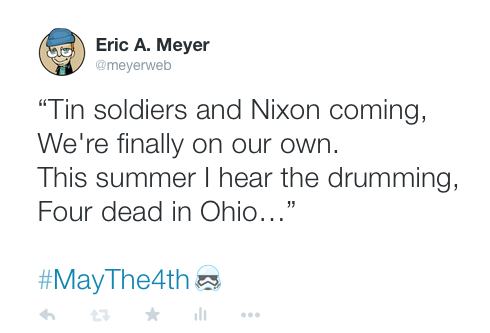Content Blocking Primer
Published 10 years, 2 months pastContent blockers have arrived, as I’m sure you’re aware by now. They’re more commonly referred to as ad blockers, but they’re much more than that, really. In fact, they’re a time machine.
Consider: a user who runs a content blocker can prevent the loading of Javascript, CSS, cookies, and web fonts. (They can block more than that, but those asset types seem to be the main targets thus far.) A person loading an article or other page from a web site gets the content, and that’s it, assuming the publisher hasn’t put some sort of “go away” server-side script in place.
Sound familiar? It should. We’ve been here before. It’s 1995 all over again.
And, just as in 1995, publishers are faced with a landscape where they’re not sure how to make money, or even if they can make money.
Content blockers are a two-decade reset button. We’re right back where we were, twenty years ago. Except this: we already know a bunch of stuff that doesn’t work.
I don’t mean that ads don’t work. Ads can work. We’ve seen small, independent ad networks like The Deck do pretty okay. They didn’t make anyone a billionaire, but they provided a good audience to advertisers via a low-impact mechanism, and some earnings for those who ran the ads and the network.
The ads that are at risk now are the ones delivered via bloated, badly managed, security-risk mechanisms. In other words: what’s at risk here is terrible web development.
Granted, the development of these ads was so terrible that it made the entire mobile web ecosystem appear far more broken that it actually is, and prompted multiple attempts to rein it in. Now we have content blockers, which are basically the nuclear option: if you aren’t going to even attempt to respect your customers, they’re happy to torch your entire infrastructure.
Ethical? Moral? Rational? Hell if I know or care. Content blockers became the top paid apps within hours of iOS9’s release, and remain so. The market is speaking incredibly loudly. It’s almost impossible not to hear it. The roar is so loud, in fact, it’s difficult to make out what people are actually saying.
I have my interpretation of their shouting, but I’m going to keep it to myself. The observation I really want to make is this: the entire industry is being given a do-over here. Not the ad industry; the web industry.
Remember, this isn’t just about ads. Ads are emblematic of the root problem, but they’re not the actual root problem. If ads were the sole concern of content blockers, then the blockers (mostly) wouldn’t bother to block web fonts. It’s possible to use web fonts smartly and efficiently, but most sites don’t, so web fonts are a major culprit in slow mobile load times. The same is true for Javascript, whether it’s served by an ad network, an analytics engine, or some other source. So they’re both targeted by blockers — not for enabling ads, but for disabling the web.
Content blockers strip the web back to what it was 20 years ago. All the same challenges and questions are back, full force. How do we make sites better, smarter, and cooler? How do we make money by publishing online?
There are reputations and probably fortunes to be made by learning from our many mistakes and finding new, smarter ways to move forward. I would advocate that people start with the core principles of the web standards movement, particularly progressive enhancement, but those are starting points, a foundation — just as they always were.
It’s not often that an entire industry gets an almost literal do-over. We have two decades of hindsight to work with now, as we try to figure out how to (re)build a web where users don’t feel like they need content blockers just to be online. This is an incredibly rare and exciting juncture. Let’s not waste it.

